
The summary chart of the broad market indexes below gives us perspective on participation. All have broken above bear market tops, but some have performed far better than others. The main takeaway on this chart in the last window. While the NYSE did participate in the move out of bear market lows, it has clearly stalled and could be back below that support very shortly. It has a rounded top which suggests further downside.
Clearly the top performer is the tech-heavy Nasdaq. Technology found a new home among defensive sectors after the bear market low. It led the charge along with other defensive sectors out of the bear market low. It now has a rounded top. The Dow is above support, but is in a 'go nowhere' consolidation. Rallies need fuel. It's drying up given the lack of participation by the NYSE and Dow since breaking above February tops.
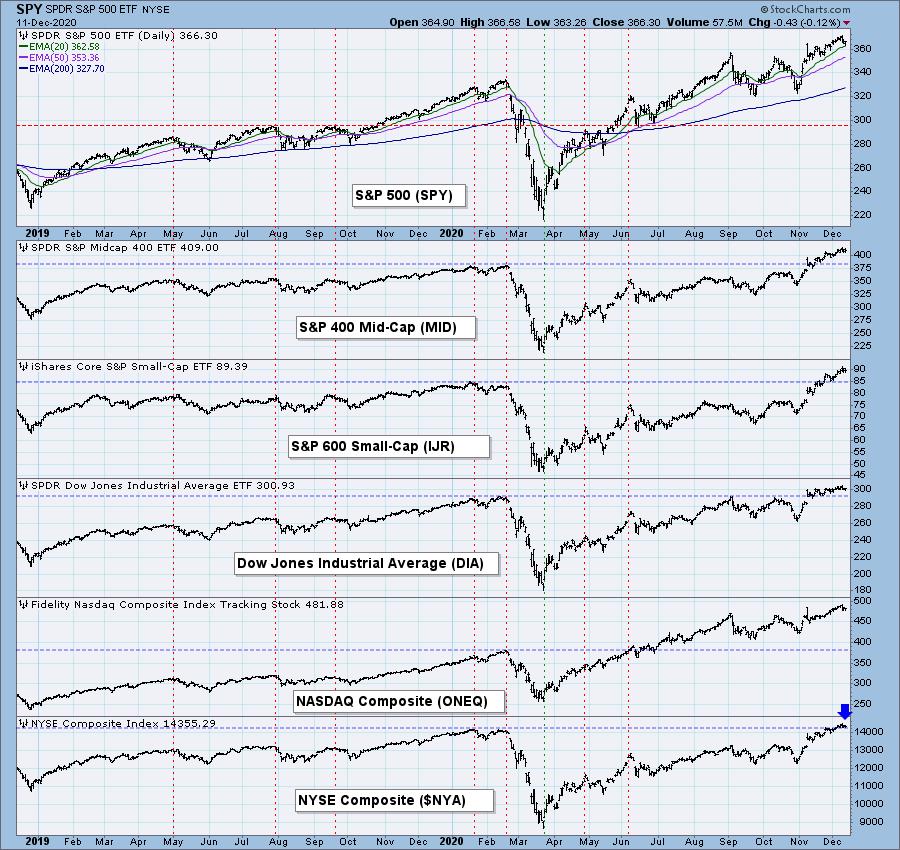
The DecisionPoint Alert Weekly Wrap presents an end-of-week assessment of the trend and condition of the Stock Market, the U.S. Dollar, Gold, Crude Oil, and Bonds. The DecisionPoint Alert daily report (Monday through Thursday) is abbreviated and gives updates on the Weekly Wrap assessments.
Watch the latest episode of DecisionPoint on StockCharts TV's YouTube channel here!
MAJOR MARKET INDEXES
TODAY'S RESULTS:
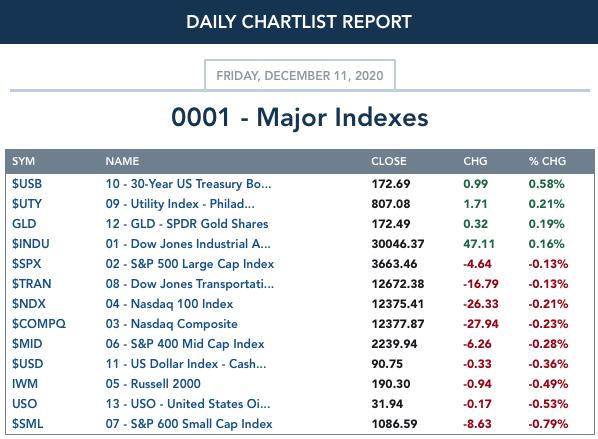
THIS WEEK'S RESULTS:
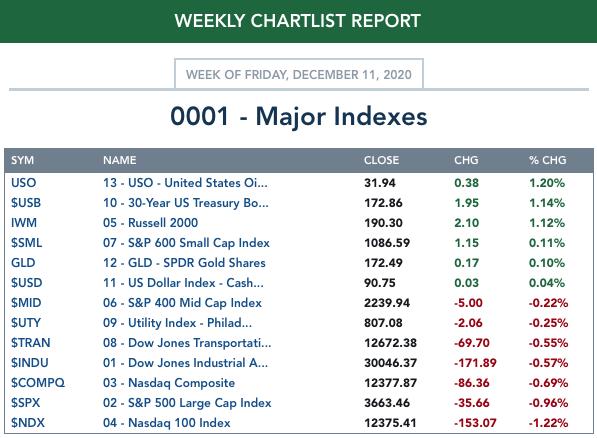
S&P 500 SECTORS
TODAY'S RESULTS:
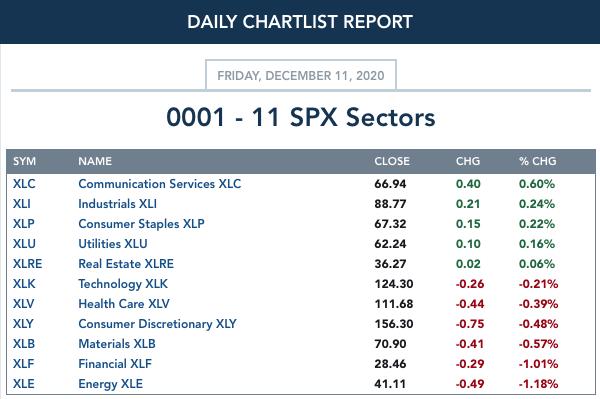
THIS WEEK'S RESULTS:
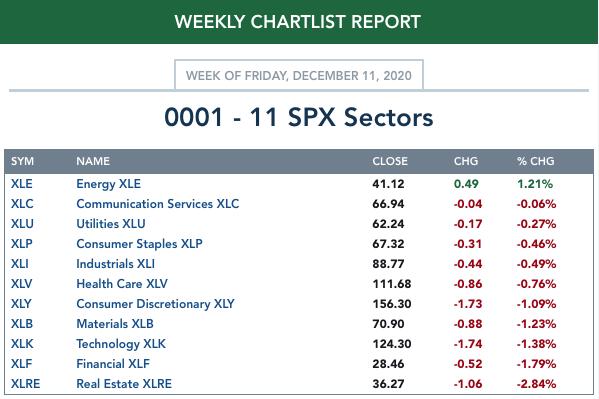
SIGNAL SUMMARY:
Each S&P 500 Index component stock is assigned to one, and only one, of 11 major sectors. This is a snapshot of the Intermediate-Term (Silver Cross) and Long-Term (Golden Cross) Trend Model signal status for those sectors.
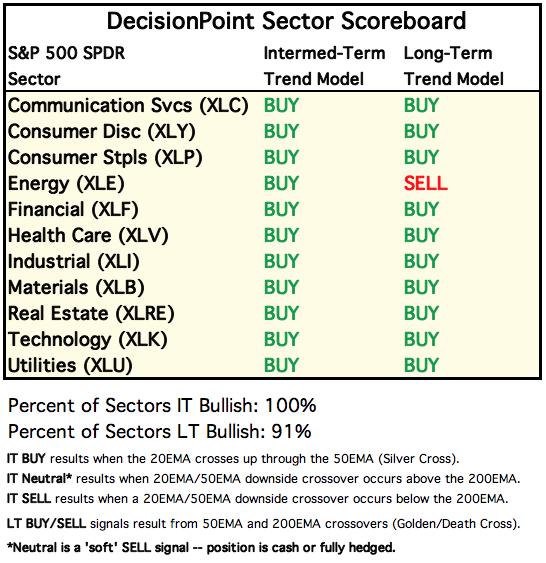
CLICK HERE for Carl's annotated Sector charts.
THE MARKET (S&P 500)
IT Trend Model: BUY as of 5/8/2020
LT Trend Model: BUY as of 6/8/2020
SPY Daily Chart: The wedge resolved downward as expected this week. Normally penetrations of the lower Bollinger Band by the VIX signals an upside reversal. Given the squeeze on the Bands, it was inevitable it would fall below. Consider it a signal that the Bands are ready to expand. Expanding Bands mean more volatility and more volatility usually means decline. Total volume was below average today.
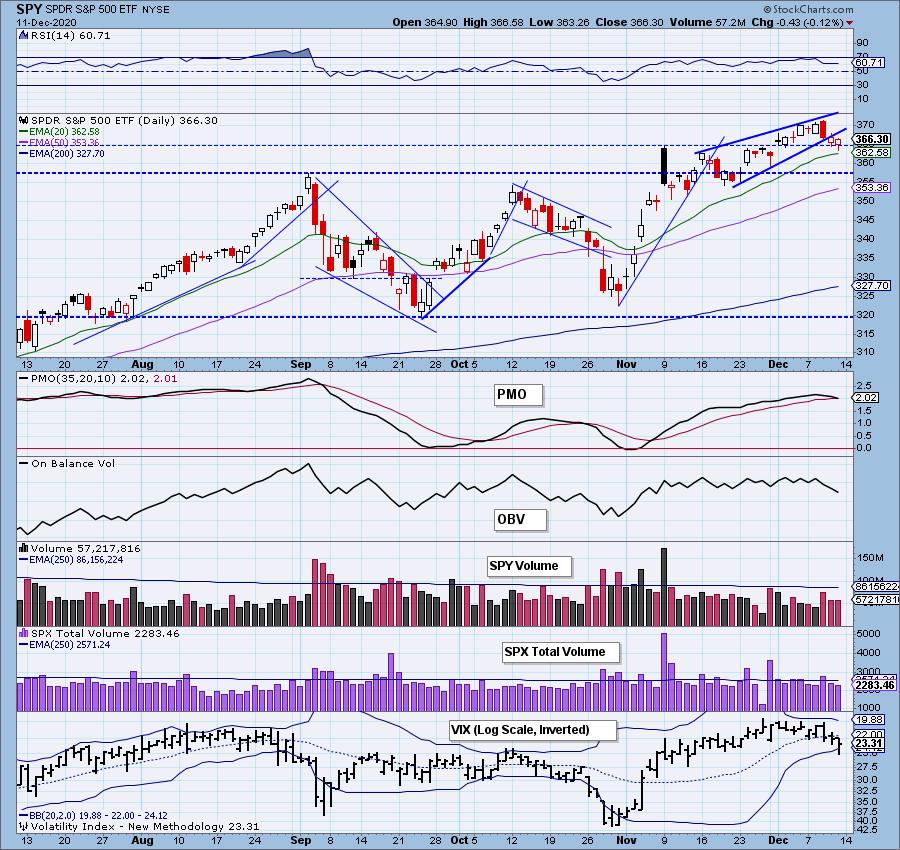
The RSI remains positive, but we can see an upcoming PMO SELL signal.
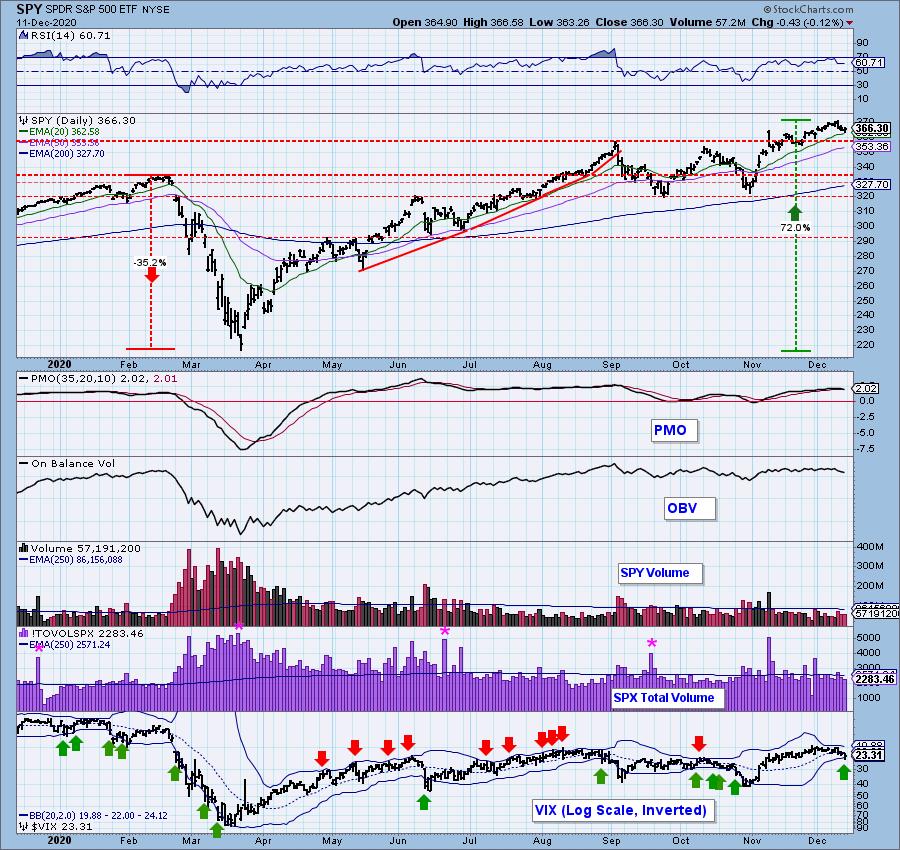
SPY Weekly Chart: The weekly PMO is still rising but is highly overbought. Price just managed to peek above the top of the broadening top. It isn't a decisive breakout and price turned down this week, nearly closing back within the pattern.
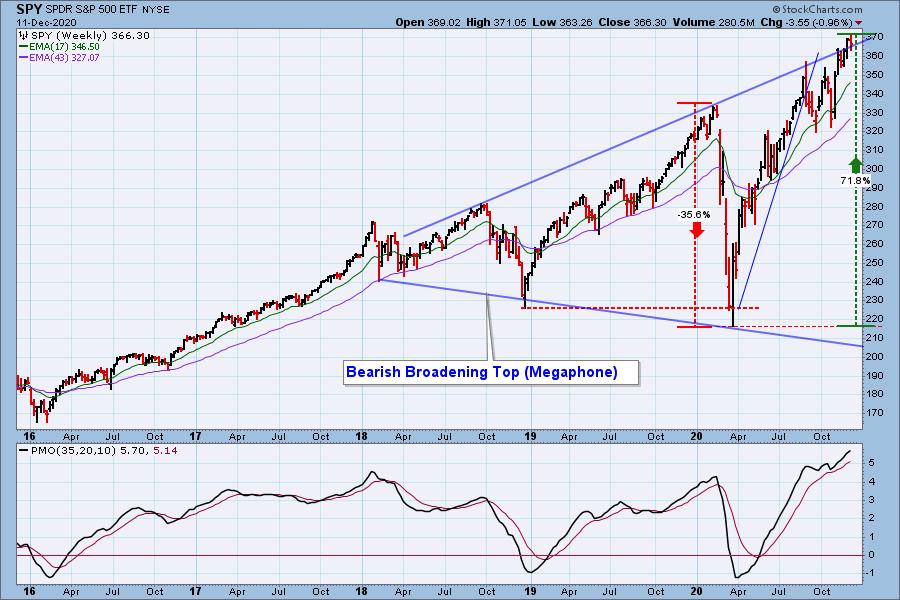
Participation: The following chart uses different methodologies for objectively showing the depth and trend of participation for intermediate- and long-term time frames.
- The Silver Cross Index (SCI) shows the percentage of SPX stocks on IT Trend Model BUY signals (20-EMA > 50-EMA).
- The Golden Cross Index (GCI) shows the percentage of SPX stocks on LT Trend Model BUY signals (50-EMA > 200-EMA).
- The Bullish Percent Index (BPI) shows the percentage of SPX stocks on Point & Figure BUY signals.
The extremely overbought readings on the GCI continue. This is the highest reading we've seen since the beginning of 2018 and it is still rising. The BPI had a negative crossover this week and the SCI is topping. We will likely see a negative crossover on the SCI early next week.
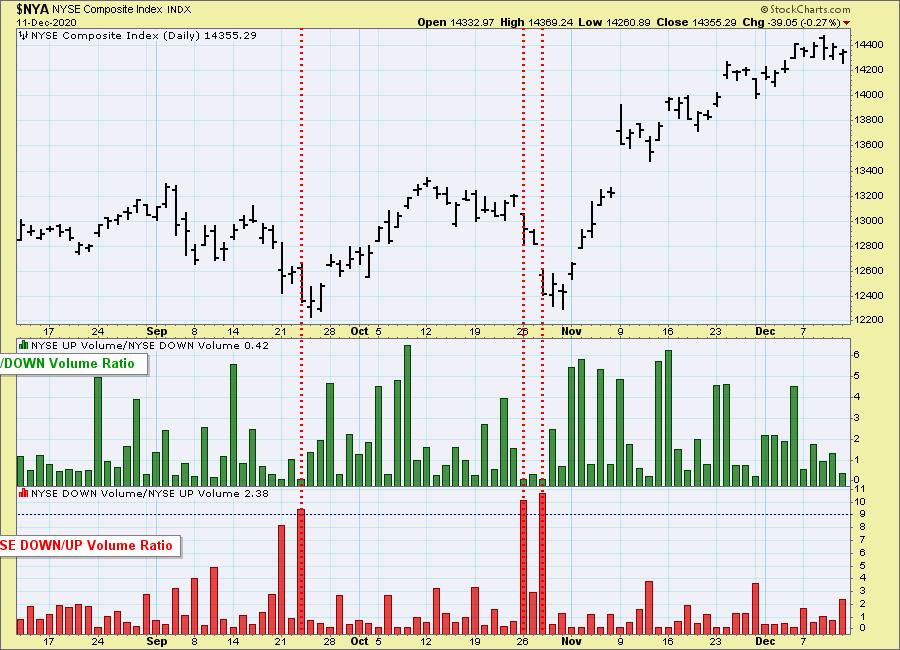
In the case of %Stocks > 200-EMA, we ARE seeing the highest reading in over three years. While we don't have a negative divergence on that indicator these highly overbought conditions will need to relieved soon. In the short and intermediate terms, there are negative divergences.
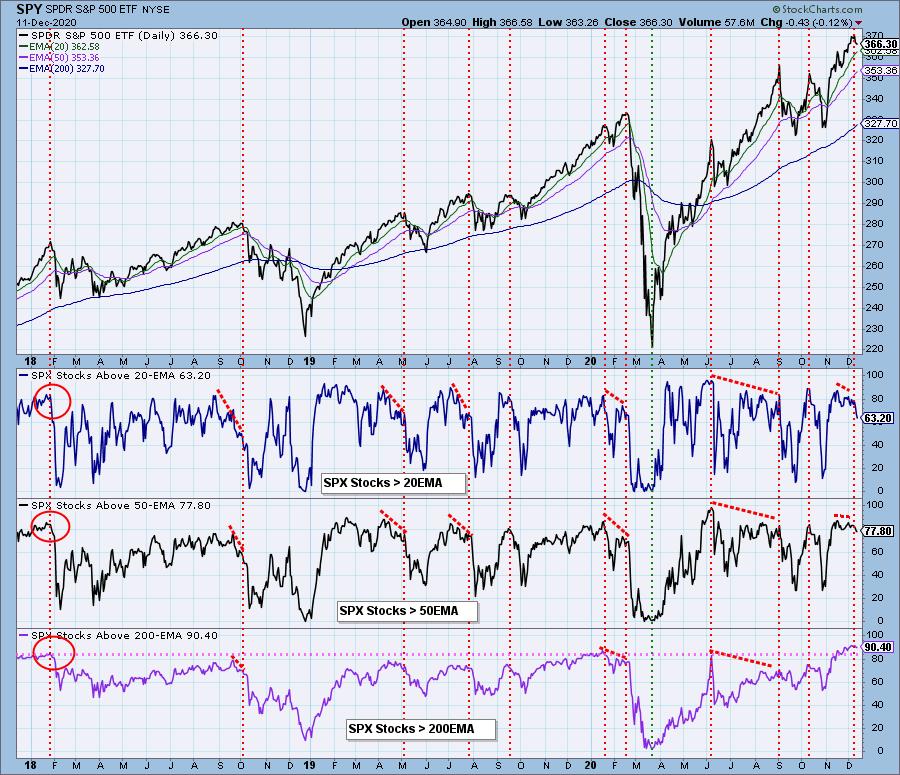
Climactic Market Indicators: No climactic readings this week. The VIX did drop below the lower Bollinger Band on the inverted scale as noted earlier. I would look toward the VIX just prior to the September top and during the mid-October decline. Those downside drops below the Band didn't signal a rally, it signaled the beginning or the continuation of a decline.
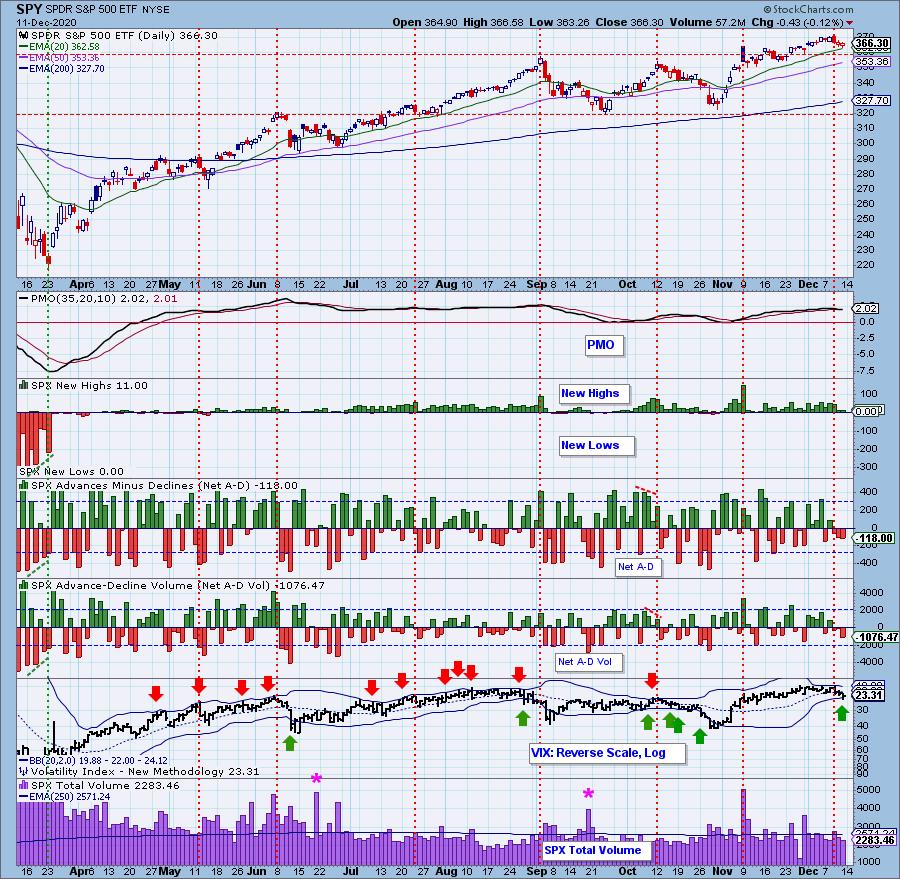
NYSE Up/Down and Down/Up volume ratios can be also be used as climax detectors. We use the 9:1 ratio suggested by the late Dr. Martin Zweig in his book, Winning on Wall Street. These climaxes happen less frequently than those on the chart above, and they can be used to clarify a particular event. We have an NYSE and S&P 500 version of the ratios, and normally they will only be published when there is a climax ratio.
We didn't see any climactic readings this week on the volume ratios.
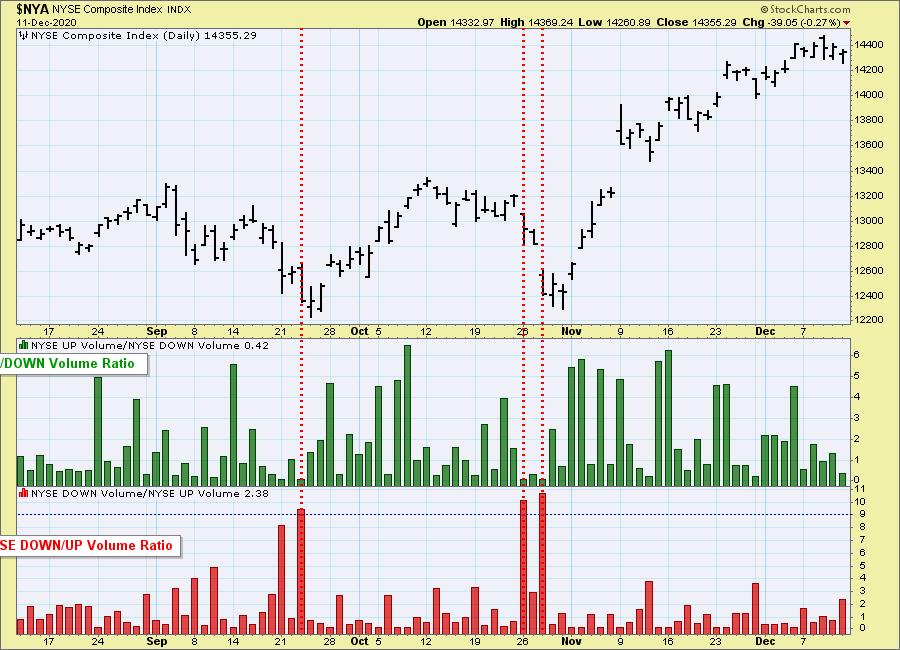
The S&P 500 version can get different results than the NYSE version because: (a) there are only 500 stocks versus a few thousand; and (b) those 500 stocks are all large-cap stocks that tend to move with more uniformity.
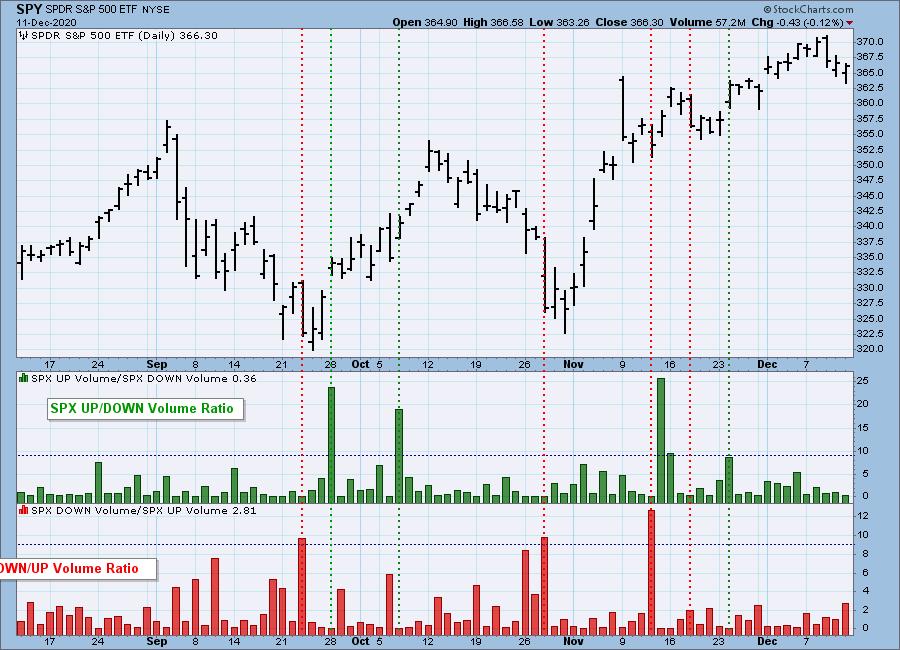
Short-Term Market Indicators: The short-term market trend is DOWN and the condition is NEUTRAL. The short-term market bias is NEUTRAL. The STO-B hit negative territory. With a bullish bias we would look at these as near-term oversold. However, we are trending lower and the %Stocks indicators are falling and not oversold. The big decline on the STO-V suggests more downside.
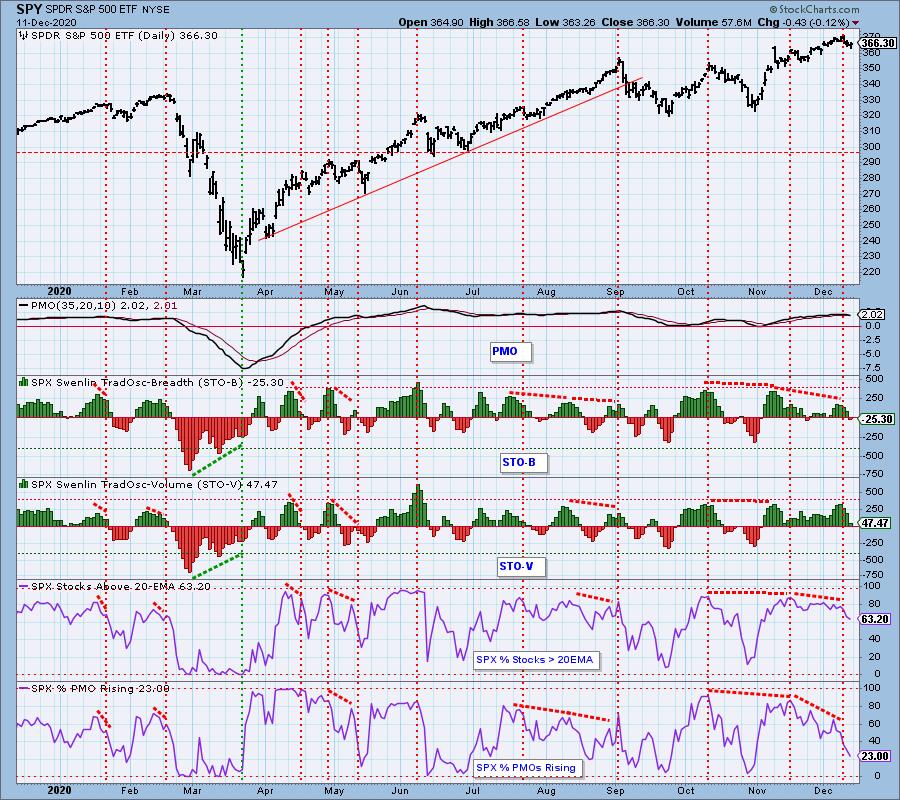
Intermediate-Term Market Indicators: The intermediate-term market trend is UP and the condition is OVERBOUGHT. The market bias in this time frame is BULLISH. A reminder, a bullish bias tells us that the market favors bullish outcomes, but it does not guarantee them. These indicators are overbought and in the case of the ITVM, extremely overbought. The PMO SELL signal is on tap and right now only half of the SPX have PMOs above the signal line.
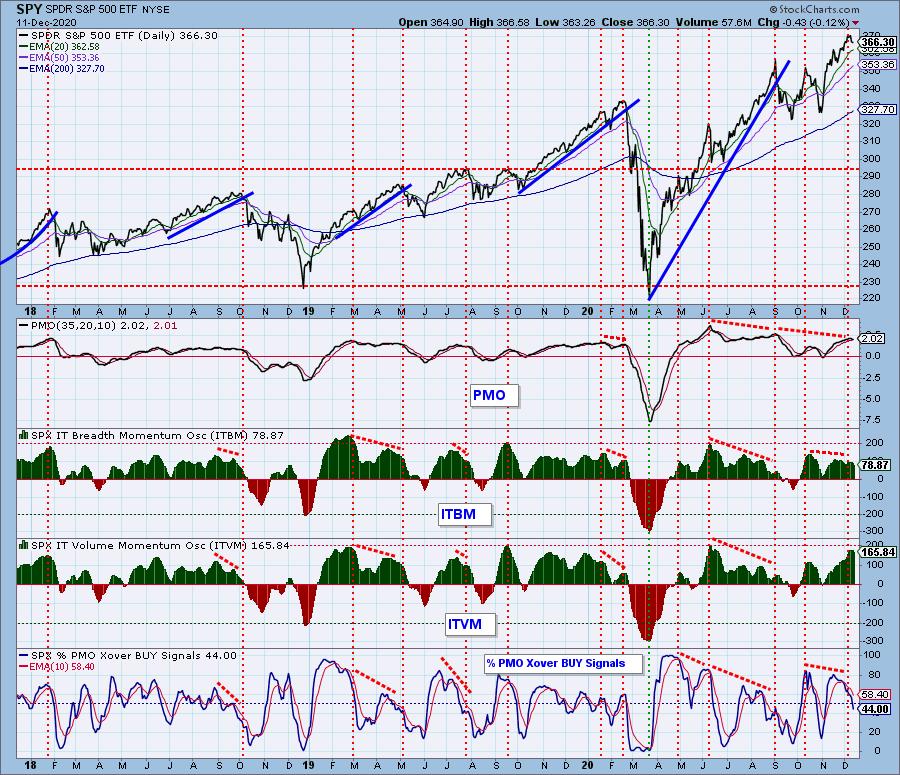
CONCLUSION: There is a small glimmer of hope for bulls right now and that is price's current ability to stay above support at both the November top and the 20-EMA. Additionally, there still is a strong bullish bias in the intermediate term. Unfortunately, those IT indicators are extremely overbought and many have negative divergences with price. There is also a declining PMO that is nearing a SELL signal. Let's not forget the declining STOs. Overbought conditions can persist, but the ice is getting thinner and with the execution of the bearish rising wedge, the cracks are appearing. We should prepare for a dunk in icy waters soon. Hard or trailing stops are a good idea right now.
Reminder: Next week is options expiration. It is an end-of-quarter event, so we should expect very high SPX Total Volume on Friday with relatively low volatility toward the end of the week.
Have you subscribed the DecisionPoint Diamonds yet? DP does the work for you by providing handpicked stocks/ETFs from exclusive DP scans! Add it with a discount! Contact support@decisionpoint.com for more information!
INTEREST RATES
This chart is included so we can monitor rate inversions. In normal circumstances the longer money is borrowed the higher the interest rate that must be paid. When rates are inverted, the reverse is true.
We now have a short-term declining trend in long-term yields that should help 20/30-year Bonds.
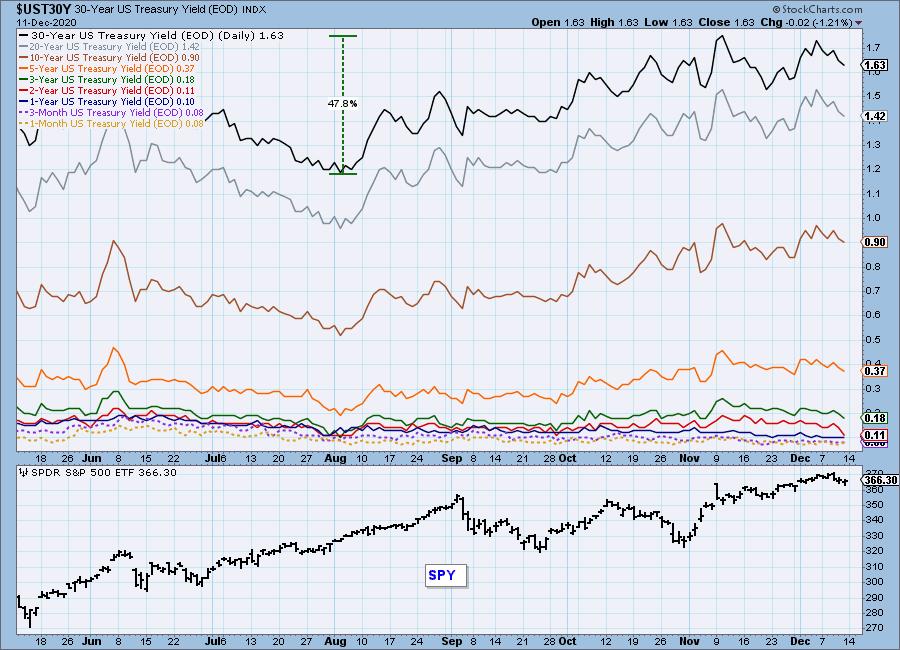
DOLLAR (UUP)
IT Trend Model: NEUTRAL as of 5/28/2020
LT Trend Model: SELL as of 7/10/2020
UUP Daily Chart: After last week's gap down, the Dollar has quietly rebounded. The RSI has turned up and the PMO is attempting to do the same.
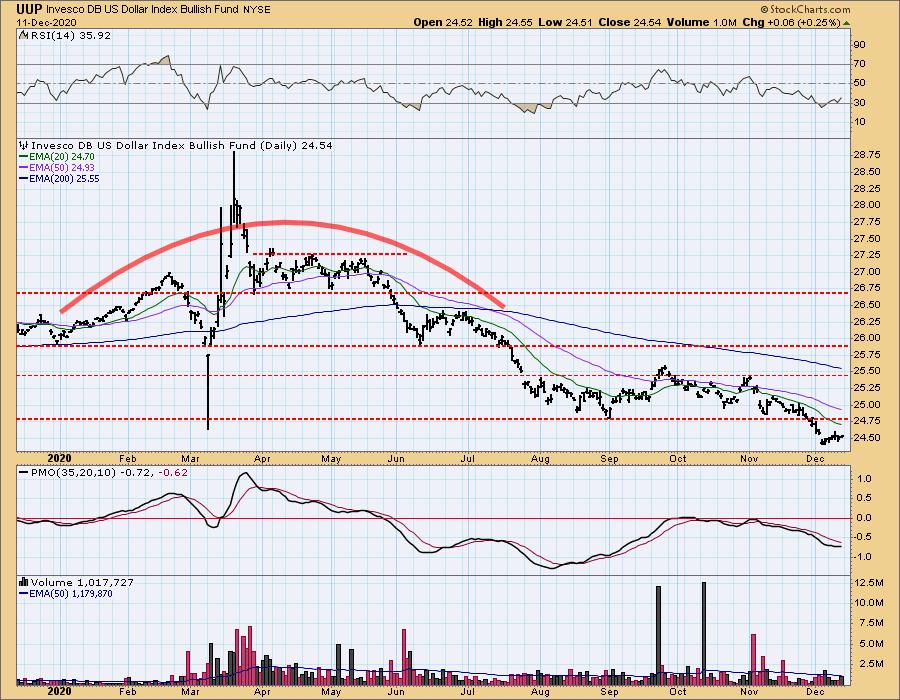
UUP Weekly Chart: Unfortunately UUP has this for a weekly chart. That breakdown was significant. $24 is the next logical support level but seeing that weekly PMO topping below its signal line and accelerating lower, don't count on this rebound to make much upside headway.
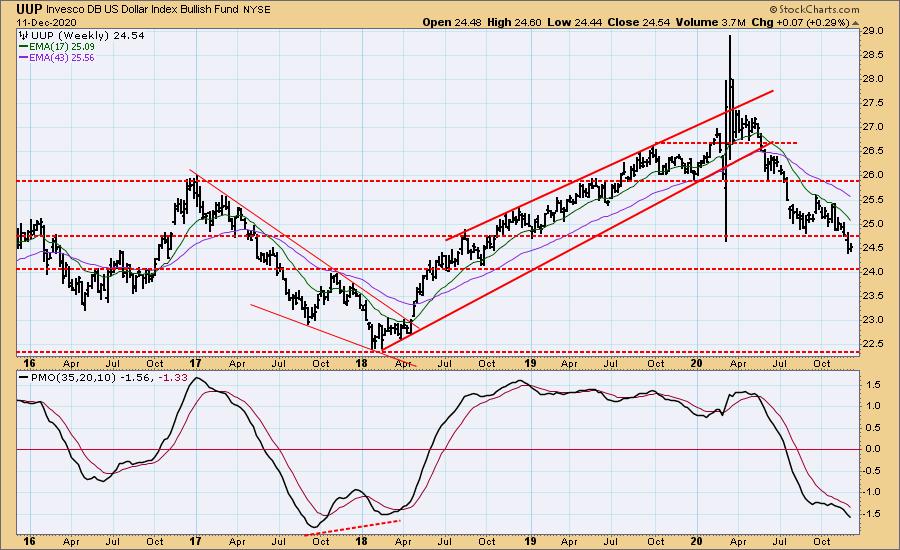
GOLD
IT Trend Model: NEUTRAL as of 10/14/2020
LT Trend Model: BUY as of 1/8/2019
GLD 6-Month Daily Chart: We have decided to add a gold ETF chart, since it is a likely trading vehicle, and the Trend Model signals will be taken from this chart.
GLD is still in a down trend from the August top, but we're looking at the November low as potentially being the final bottom for the trend. If GLD can rally above the is week's top, we'll have a bottom above a bottom, and a top above a top, which will set a new short-term up trend.
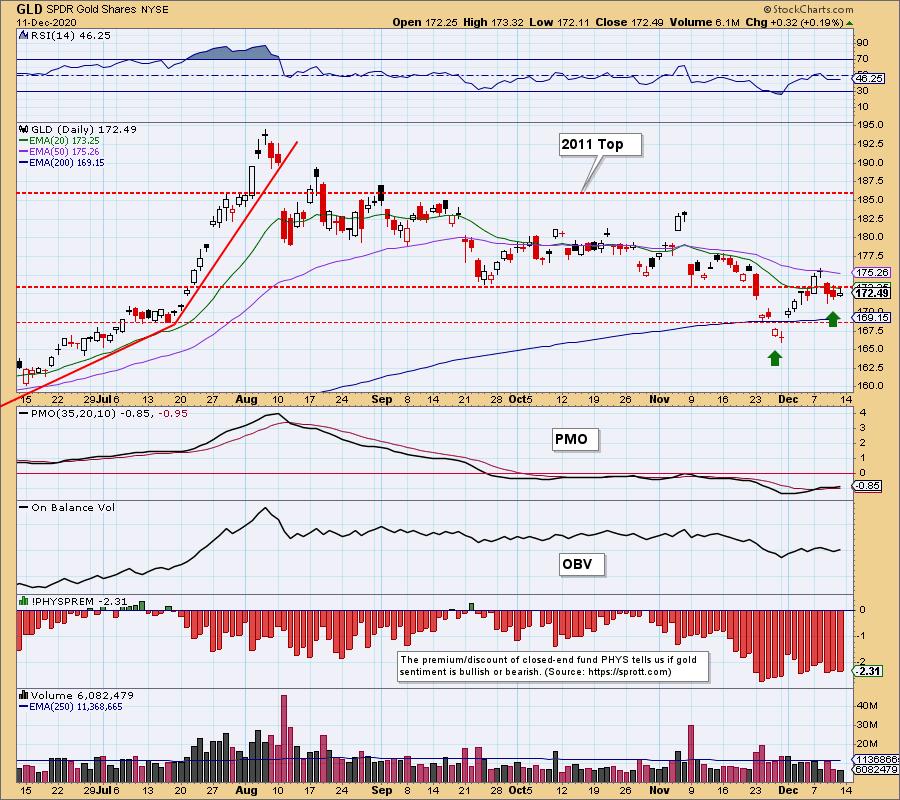
GOLD Daily Chart: The one-year chart for $GOLD shows the PMO at the low (oversold) end of the range on a BUY signal. Discounts remain very high and typically that provides the right environment for Gold to rebound.
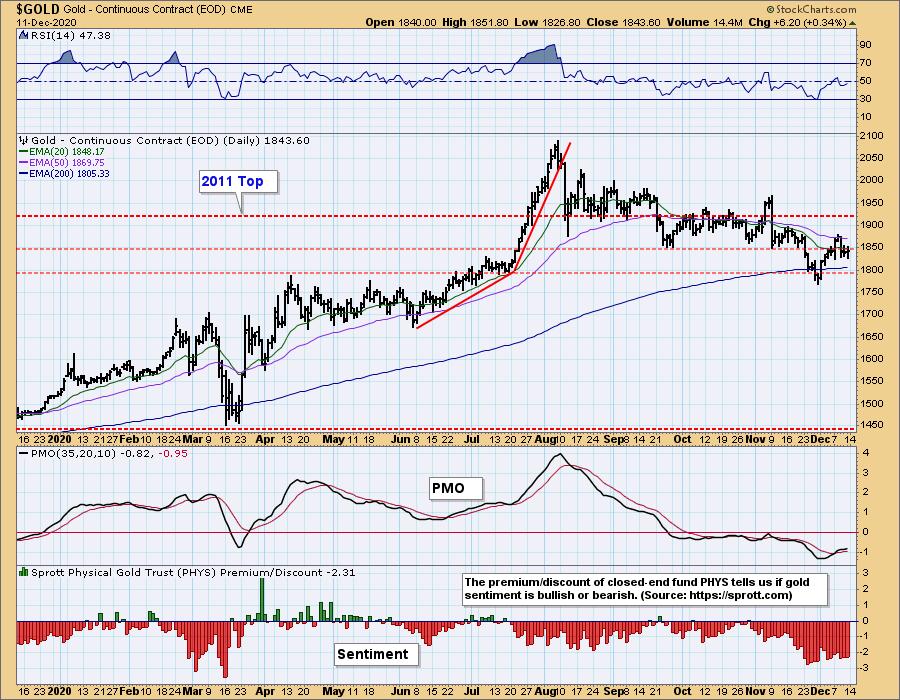
GOLD Weekly Chart: A bullish flah formation dominates this time frame. The declining PMO doesn't inspire confidence, but it does appear to be decelerating somewhat.
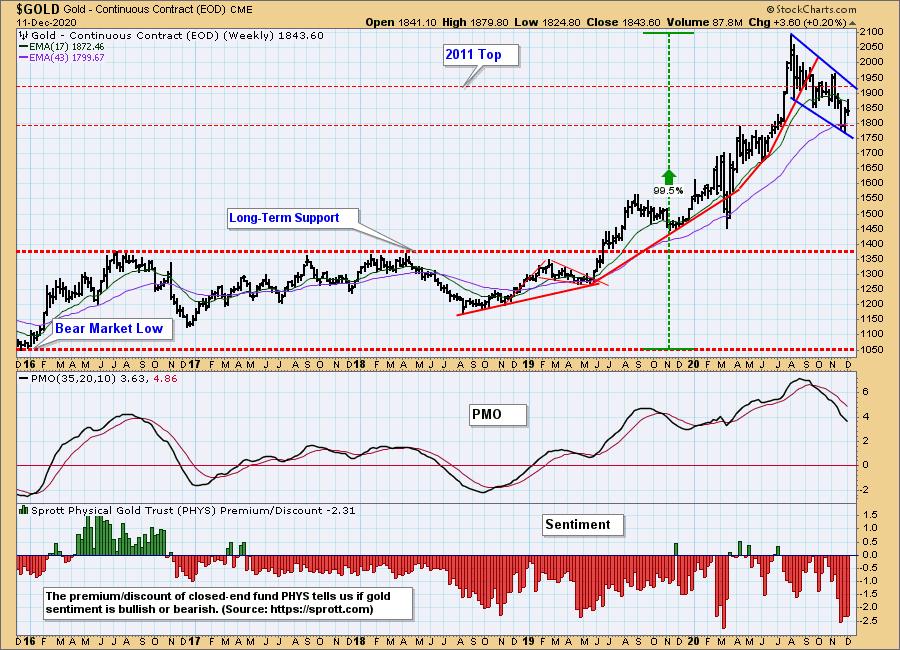
GOLD MINERS Golden and Silver Cross Indexes: Miners are frustrating right now, but if Gold does make a comeback that will likely give them a boost. The PMO is currently on a BUY signal but the RSI is very negative and not oversold. The SCI is oversold and has had a positive crossover and the GCI moved out of extremely overbought territory. The other indicators aren't overbought, but it would be nice to see them in a solid rising trend. The 20/200-EMAs are strong overhead resistance, but given the improved SCI and BPI, we are cautiously optimistic.
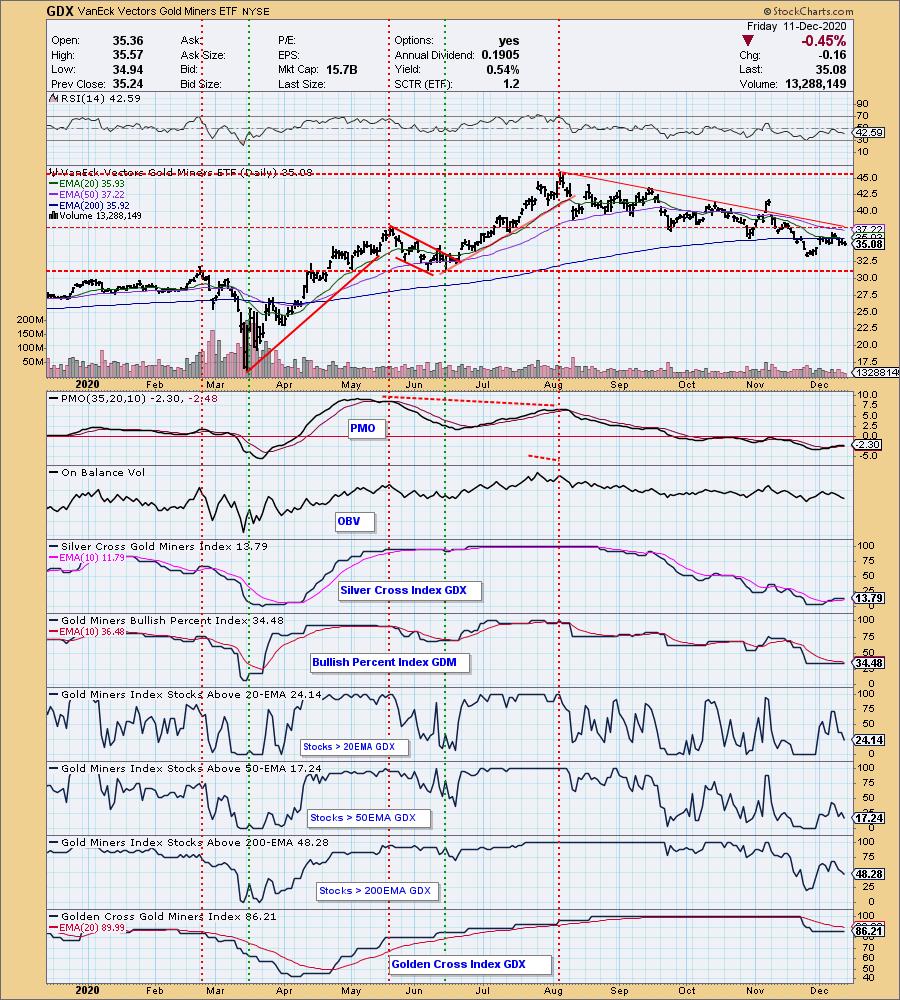
CRUDE OIL (USO)
IT Trend Model: BUY as of 10/20/2020
LT Trend Model: SELL as of 2/3/2020
USO Daily Chart: USO broke out this week and finally saw some follow-through. It did decline today, but it is holding over the earlier December top. The PMO continues to rise and the RSI is positive.
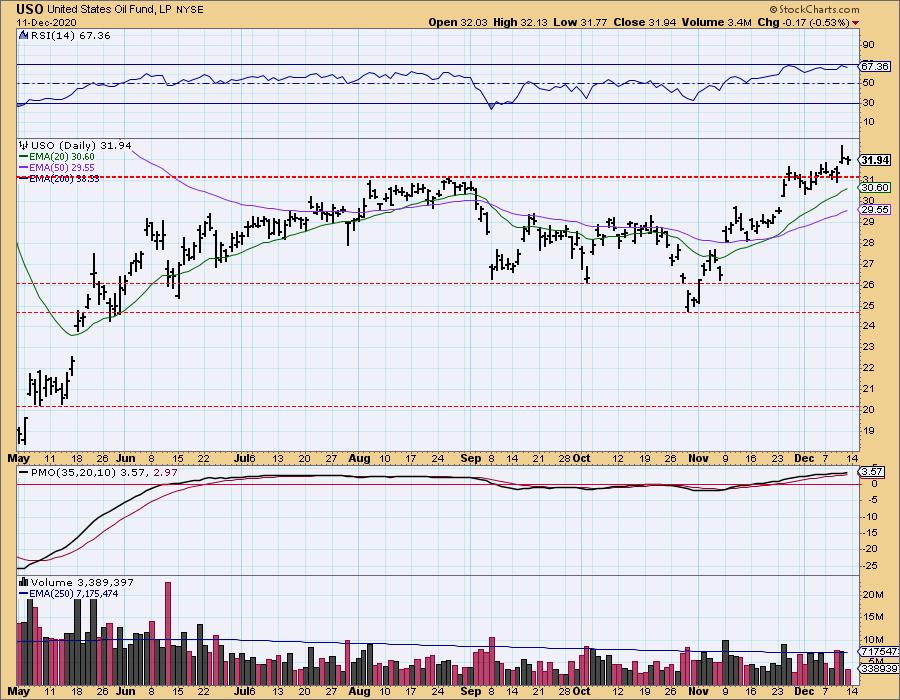
USO/$WTIC Weekly Chart: The breakout is holding and the weekly PMO is rising out of very oversold territory which is very bullish in the intermediate term. There isn't enough weakness on either of these charts to suggest a major breakdown. We do know that the Energy sector is highly overbought. Refer to our comments regarding thin ice in the Conclusion.
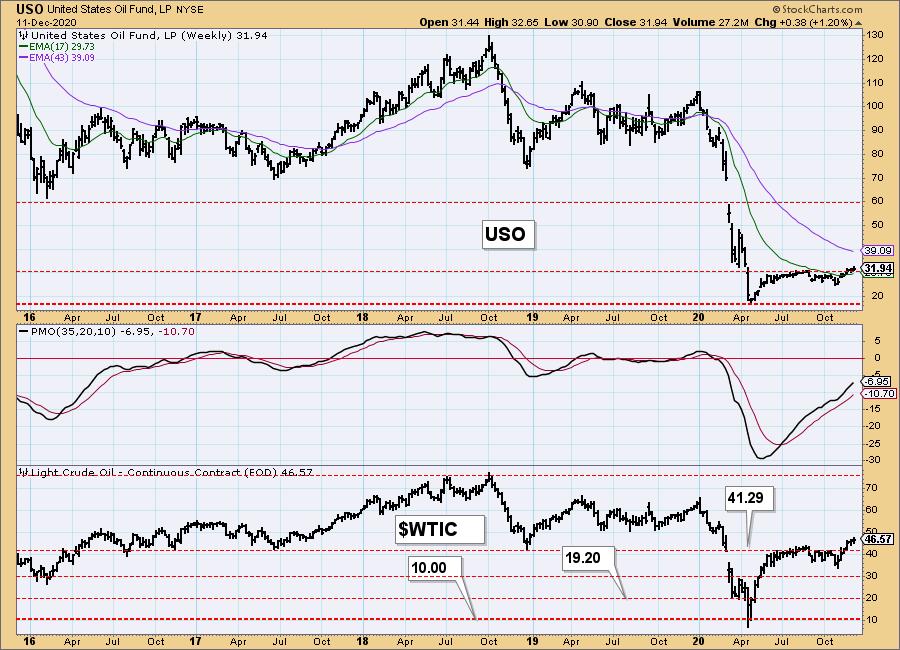
BONDS (TLT)
IT Trend Model: NEUTRAL as of 8/27/2020
LT Trend Model: BUY as of 1/2/2019
TLT Daily Chart: Treasury yields are in a declining trend, hence TLT is in a rising trend. The RSI just moved into positive territory above net neutral (50). The PMO has triggered a crossover BUY signal in oversold territory. The 50-EMA has been TLT's nemesis since the August top. Every time the RSI reaches this territory, TLT has reversed. We have also seen PMO BUY signals accompanying the RSI's forays into positive territory and that has signaled a reversal. The conditions are right for a breakout, but they have been before. We're leaning bullish, but concede that this has also been a typical reversal point.
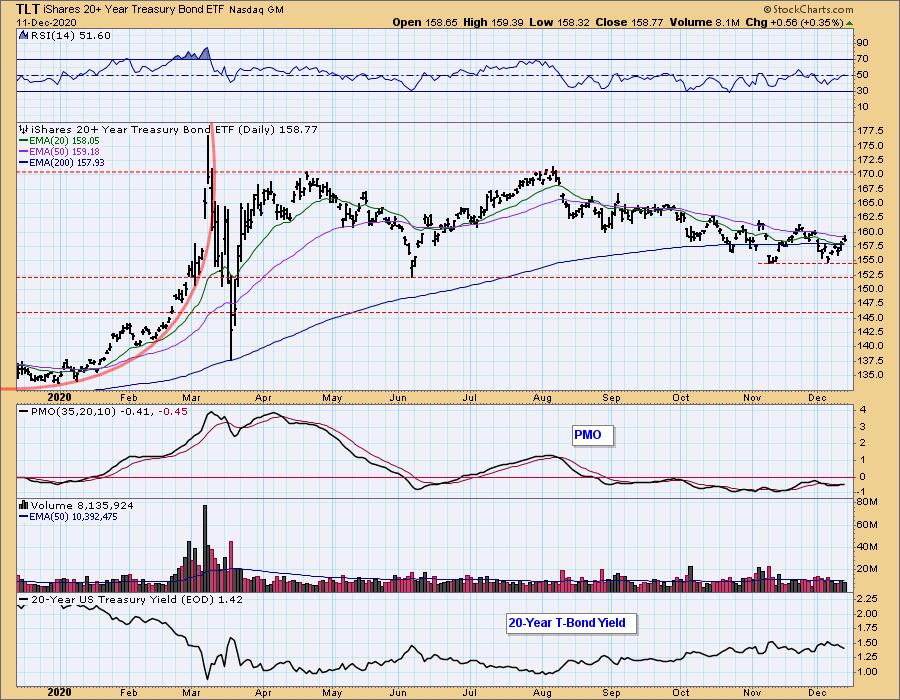
TLT Weekly Chart: The weekly chart suggests we won't see a breakout given the very negative PMO configuration. Important support lies at the 2nd quarter low.
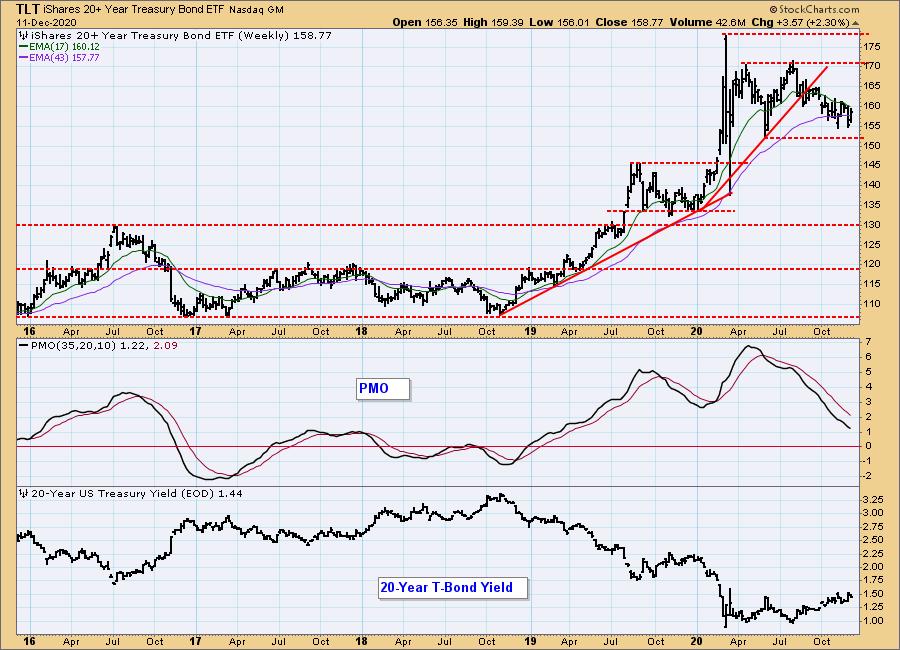
Technical Analysis is a windsock, not a crystal ball.
-- Carl & Erin Swenlin
___________
Our job is not to see the future, it is to see the present very clearly.
-- Jawad Mian, stray-reflections.com
Disclaimer: This blog is for educational purposes only and should not be construed as financial advice. The ideas and strategies should never be used without first assessing your own personal and financial situation, or without consulting a financial professional. Any opinions expressed herein are solely those of the author, and do not in any way represent the views or opinions of any other person or entity.
NOTE: The signal status reported herein is based upon mechanical trading model signals, specifically, the DecisionPoint Trend Model. They define the implied bias of the price index based upon moving average relationships, but they do not necessarily call for a specific action. They are information flags that should prompt chart review. Further, they do not call for continuous buying or selling during the life of the signal. For example, a BUY signal will probably (but not necessarily) return the best results if action is taken soon after the signal is generated. Additional opportunities for buying may be found as price zigzags higher, but the trader must look for optimum entry points. Conversely, exit points to preserve gains (or minimize losses) may be evident before the model mechanically closes the signal.
Helpful DecisionPoint Links:
DecisionPoint Alert Chart List
DecisionPoint Golden Cross/Silver Cross Index Chart List
DecisionPoint Sector Chart List
Price Momentum Oscillator (PMO)
Swenlin Trading Oscillators (STO-B and STO-V)
DecisionPoint is not a registered investment advisor. Investment and trading decisions are solely your responsibility. DecisionPoint newsletters, blogs or website materials should NOT be interpreted as a recommendation or solicitation to buy or sell any security or to take any specific action.
